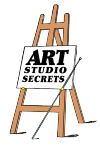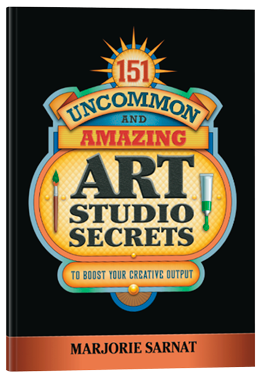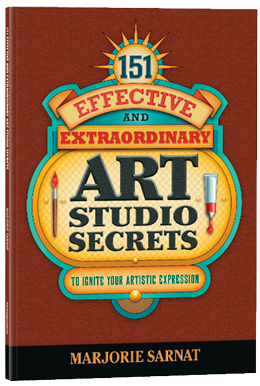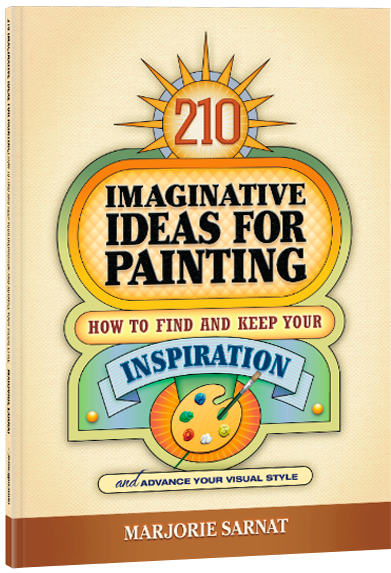Color Secrets
“In visual perception a color is almost never seen as it really is – as it physically is. This fact makes color the most relative medium in art.” – Josef Albers
Your color choices will greatly influence the viewer’s emotional reaction to your paintings. Remembering some general rules can help you express your ideas.
 “Audubon” from the Kleo Kats series, by Marjorie Sarnat
“Audubon” from the Kleo Kats series, by Marjorie Sarnat
Know Your Relatives
Color is always relative. If a color is not working in your painting, adjusting the colors near it often solves the problem. For example, make a color appear brighter by surrounding it with duller colors. Surrounding areas have a profound effect upon the appearance of any color.
Keep It in the Family
A painting should have a dominant hue, with approximately ¾ in one color family. The remaining areas work well with complementary hues or another color temperature.
Brightening Up
Metallic acrylics mixed into acrylic white create gorgeous pastels that look non-metallic, but have a vibrant, less chalky hue than achieved by mixing flat colors into white. A bit of metallic color mixed into any flat color will intensify its hue, too.
Colors Have Character
When a painting has wonderful color harmony the palette usually has a common denominator, such as rich jewel tones, dusty pastels, or earth-tones. I call it the “character” of the colors.
Determine which colors express your visual statement. Gather or make color swatches, including discords and neutrals for accents. Name the group descriptively, such as “Sun-bleached” or “Etruscan.” A name helps you keep your colors’ character in mind as you paint.
Pre-Mixed White Neutrals
Premix some warm and cool neutral whites so you have them ready for lightening a color. These whites will help keep your mixed colors rich.
I keep gouache mixes in a small dish. When it dries out I add a bit of water, let it soak a few minutes, stir and use. You can keep acrylic mixes in airtight food storage containers. Add a drop of water now and then to keep the paint from drying out.
This is a great way to save white paint that is left on your palette, even if it has a bit of other color on it. Add it to your warm or cool premixes for future use.
(From “151 Uncommon and Amazing Art Studio Secrets,” Tip No. 93)
Black is Not the Absence of Color
Make rich, never-dull blacks by mixing burnt umber and ultramarine blue. This works for any kind of paint. Adjust the proportions to create warmer blacks (more umber) or cooler blacks (more blue).
The custom mixture makes gorgeous grays with white added. Adjust the warmth or coolness of the gray, as well.
Replacing ready-made black paint with a custom mix will enliven your painting in subtle but important ways.
(From “151 Uncommon and Amazing Art Studio Secrets,” Tip No. 94)
Mixing Tip
When mixing a color, start with your lightest color and gradually add small amounts of the darker or brighter color to it so you don’t overwhelm it. This tip will save you a lot of paint.
Kid Friendly
(From “151 Uncommon and Amazing Art Studio Secrets,” Tip No. 95)
These rules and ways of handling color are tried and true guides that work for most cases. But in art and life, rules are meant to be broken. Let your own preferences be your final authority.
(Portions of this post originally appeared in the newsletter of the California Art League.)
 color,
color,  mixed media,
mixed media,  painting,
painting,  techniques | in
techniques | in  Art Studio Secrets
Art Studio Secrets 







